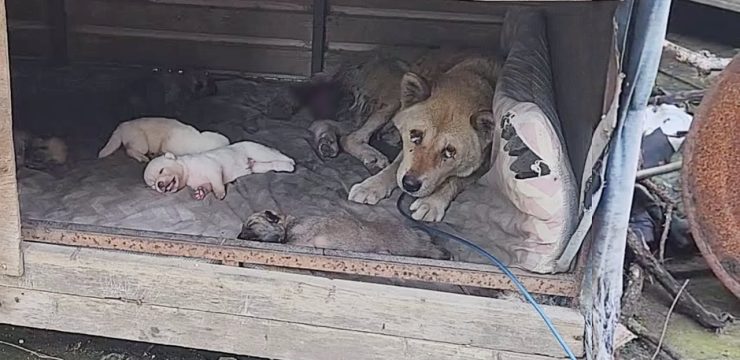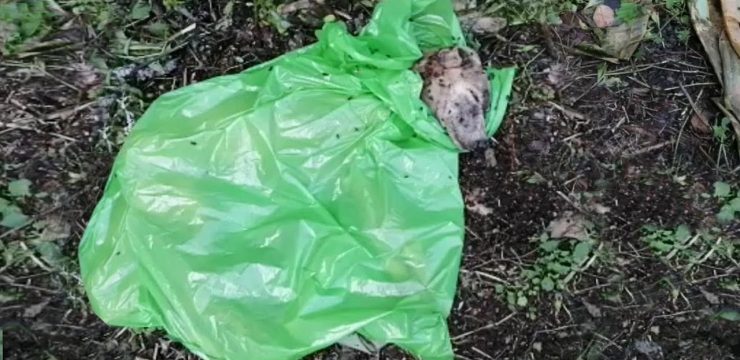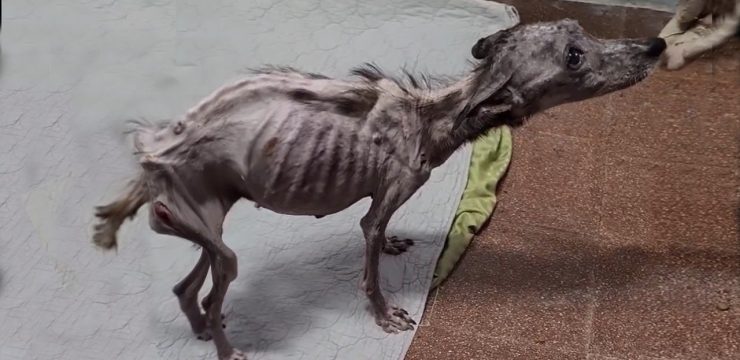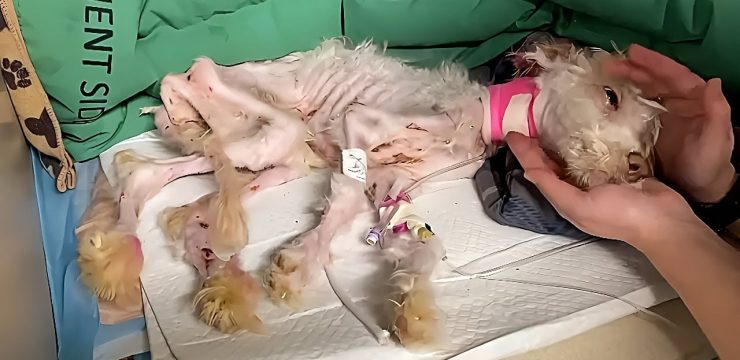Fur plays a vital role in the lives of many animals. Not only does it help them stay warm when temperatures drop, but it also gives them their distinctive appearance. Some animals, in fact, are so well known for their furry features that without them, they might be nearly unrecognizable. So when an animal loses its fur, it doesn’t just face colder weather—it might also face serious challenges in the wild.

Recently, an incredibly rare animal was found, and it caught people’s attention because it looked a lot like a hairless cat. But once experts took a closer look, they realized it was something much more unusual. Curious to know what it is and how it managed to survive out in the cold all alone? Keep reading for the full story of this one-of-a-kind creature and how it beat the odds.
Last month, a nonprofit wildlife rescue organization called Hope for Wildlife, located in Nova Scotia, Canada, received a call about an animal in desperate need of help. A couple living in West Arichat had discovered the small creature in their yard, trembling and clearly suffering from the freezing temperatures. They quickly contacted the organization, which specializes in helping sick, injured, and orphaned wildlife, and soon, the animal was brought in for care.
At first glance, the animal seemed to be a Sphynx cat, a breed known for its lack of fur. But rescuers quickly realized it was not a cat at all—it was a raccoon, completely hairless from head to toe. This surprising discovery left many people stunned. Without its characteristic fur and the black “mask” pattern on its face, identifying the creature as a raccoon was no easy task. The rescue team later confirmed that it was a northern raccoon, suffering from a severe case of alopecia, a condition that causes hair loss.
According to Hope Swinimer, the founder and director of Hope for Wildlife, while the organization has encountered raccoons with hair loss before, they had never seen a case as extreme as this one. “She only has a few patches of fur left, mostly around her face, legs, and feet,” Swinimer said in an interview with The Canadian Press. “This is truly an extreme case.”
Despite being female, the raccoon was affectionately given the name Rufus, after the hairless mole rat character in the cartoon Kim Possible. The team at the rescue center explained that while they don’t yet know the exact cause of her hair loss, they suspect it may be due to an autoimmune disorder that has affected her hair follicles. They ruled out other common causes such as parasites, mange, and fungal infections. Fortunately, her skin was found to be in good condition, despite the absence of fur.
Fur isn’t just about looks—it’s essential for survival. Raccoons depend on their thick fur coats to protect them from cold weather and to shield their skin from injury. Without it, they are incredibly vulnerable. That’s why Rufus’s survival story is nothing short of miraculous. “We can’t believe this little lady made it through the winter without any fur and didn’t suffer from frostbite or worse!” the rescue organization shared in a Facebook post, expressing their amazement at how she managed to survive outdoors with no protection.
According to the rescuers, Rufus has a lively and determined personality. “She’s got a lot of spunk,” they noted. Her survival, they said, was entirely thanks to her own resilience and willpower. When she arrived at the rescue center, she was in poor condition, clearly weakened by her time in the wild. “We were really worried for a few hours,” Swinimer admitted. “But then she started to show signs of recovery—she got hungry, started eating, and became much more active. We’ve seen a huge improvement since her arrival.”
Given her unique situation and inability to return safely to the wild, Rufus may become a permanent resident at the Hope for Wildlife facility. The organization is already planning a custom habitat for her, which will include a secure outdoor space where she can enjoy fresh air while staying warm. Her new home will feature cozy spots for her to rest, such as hammocks and nesting boxes, providing her with comfort and enrichment.
It’s not every day you hear about a hairless raccoon, and Rufus’s story has captivated animal lovers everywhere. Her survival in such harsh conditions is a testament to her strength, and thanks to the compassion of the couple who found her and the dedicated team at Hope for Wildlife, she now has a second chance at life.
Animals like Rufus remind us of the importance of compassion, awareness, and the work of organizations that dedicate themselves to protecting wildlife in need. Her story is not just about survival; it’s about the remarkable bond between humans and animals, and how a little kindness can make all the difference.
Have you ever seen a license plate or animal story that made you smile? We’d love to hear about it! And if you enjoyed reading about Rufus, this incredible raccoon, please share her story with others who love animals as much as you do. Let’s spread the word about this extraordinary creature and the wonderful people who helped her.





